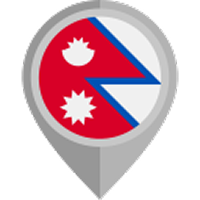Nepal vision | 15/04/2025
Many trekkers who want to get off the beaten path in Nepal, far away from the busy Everest or Annapurna trails, find Kanchejunga the one your heart needs. But there is a catch, so in the hearts of there are two unexplored gems: the Kanchenjunga Circuit Trek and Kanchenjunga Base Camp Trek.
Kanchenjunga Circuit Trek is the journey through the eastern Nepal passing through the rhododendron and bamboo forest, cascading waterfalls and giant peaks of Kanchenjunga Main, South, Central, and Yalung Kang, as well as Kangbachen, Jannu (Kumbhakarna), Tent Peak, Wedge Peak, Nepal Peak, Kirat Chuli, Gimmigela, Kabru, Rathong, Kokthang, Nupchu, Tha Nagphu, Sarphu, and even distant glimpses of Everest, Lhotse, and Makalu from high passes and scenic viewpoints like Pangpema, Oktang, and Sele La. It also immerses you in the rich culture of the warm-hearted Rai and Limbu people, whose beliefs blend Buddhist, Hindu, and animist traditions.
On the other hand, the Kanchenjunga Base Camp Trek passes through those remote eastern Himalayas, following a similar route. But along the way you will be greeted with Kanchenjunga Main, Yalung Kang, Kanchenjunga Central, Kanchenjunga South, Kangbachen, Jannu (Kumbhakarna), Tent Peak, Nepal Peak, Cross Peak, The Twins, Wedge Peak, Mera Peak, Kabru, Talung, Rathong, Koktang, Nyukla Lachung, and the dramatic south face of Kanchenjunga. At the same time, the Cultural encounters with warm-hearted locals, glimpses of rare wildlife such as red pandas and snow leopards, and the raw, untouched beauty of the Kanchenjunga Conservation Area make this trek a quiet yet majestic one..
Let me make this a bit easier for you by providing all the required information on the Kanchenjunga Circuit trek vs. the Kanchenjunga Base Camp trek. So, without any further ado, let's get right in.
Kanchenjunga Circuit Trek Overview
Kanchenjunga Circuit Trek is among the unexplored gems circling the remote and challenging trails of the country's far eastern region near the border with Sikkim. The newly opened route in 1988 has been able to attract many trekkers due to the solitude, cultural depth, and pristine natural beauty of trekking adventures.
As you take your flight to the countryside of Bhadrapur and start with the official walk from the Talpe Jab through deep valley, alpine forest, high passes and glaciers to both the Kanchenjunga North and South Base Camp connected via Sele Pass. Making your way to the tea garden, terraced hillside and remote village and acclimatizing in the Ghuna and Khambachen, you reach the climax at Pangpema, the North Base Camp of Kanchenjunga, and later Oktang viewpoint near the South Base Camp.
The descent is a bit less strenuous. It takes a scenic route through passes like Selele La and Sinion La before descending to lower villages such as Yamphudin. Throughout the whole journey, you will meet the friendly local people, Rai, Limbu, and Sherpa. Their alluring customs and culture are the highlights of the trek.

Highlights of the Kanchenjunga Circuit Trek
- Walk through the picturesque villages, followed by lush forests and untouched mountain valleys wrapped in the arms of the Kanchenjunga region.
- Experience the majestic calm of mighty Kanchenjunga at both North and South Base Camps, surrounded by towering snowy peaks and colorful prayer flags fluttering in the wind.
- Starting from the wild alpine valleys to high mountain passes, you are up for the adventure to kickstart your adrenaline.
- Encounter rare and endangered wildlife in the heart of the Kanchenjunga Conservation Area, including the elusive snow leopard, red panda, Himalayan black bear, and blue sheep—each adding a touch of wild magic to your journey.
Overview of the Kanchenjunga Base Camp Trek
The Kanchenjunga Base Camp Trek is a less demanding and more straightforward journey that takes you directly to the North Base Camp (Pangpema) and back, retracing your steps from Ghunsa. It's an excellent opportunity to explore the remote and peaceful landscapes of the Kanchenjunga Conservation Area without looping around. You also have the option to visit the South Base Camp for an even more comprehensive experience.
The trek begins with a flight and jeep ride to Taplejung. It then follows a trek through subtropical forests, terraced farmlands, and rhododendron oak woodlands before entering the high alpine terrain. Along the way, you pass through traditional villages such as Sekathum, Amjilosa, Gyabla, and Ghunsa. These villages showcase Tibetan Buddhist influences, with ancient monasteries and yak pastures adding to the cultural richness.
The highlight of the trek is reaching Pangpema (5,143m), the Kanchenjunga North Base Camp, where you're treated to breathtaking views of Kanchenjunga's towering peaks. After spending time at the base camp, you follow the return trail back to Ghunsa, passing through the vast Kanchenjunga Conservation Area, which is home to endangered wildlife like snow leopards and red pandas. You may also consider visiting the South Base Camp for an additional cultural and scenic experience.
Highlights of the Kanchenjunga Base Camp Trek
- Getting by those traditional villages with the alluring future and customs of Tibetan Buddhist culture, ancient monasteries, and yak herders.
- Make your way through the lush forests, rhododendron woods, alpine meadows, and rocky glacial areas.
- Reach the North Base Camp (Pangpema), located at 5,143m, for incredible close-up views of Kanchenjunga.
- Chance to see the alluring animals of the Kanchenjunga Conservation Area and spot rare animals like snow leopards, red pandas, and Himalayan birds.
Key Differences Between the Kanchenjunga Circuit Trek and the Kanchenjunga Base Camp Trek
Despite being in the same region, there is a slight difference between these two gems, so let us get right into it.
Trek Type and Duration
- Kanchenjunga Circuit Trek is a circular route that takes you around the Kanchenjunga massif, including both the North and South Base Camps. It usually takes 20-28 days.
- Kanchenjunga Base Camp Trek is an out-and-back trek to the North Base Camp (Pangpema), with an optional side visit to the South Base Camp. It typically lasts 18-26 days.
2. Route and Key Stops
- Kanchenjunga Circuit Trek involves a longer route with multiple high-altitude passes like Mirgin La and Sele La, and visits villages such as Sekathum, Amjilosa, Ghunsa, Kambachen, and Lhonak.
- The Kanchenjunga Base Camp Trek follows a more straightforward path with key stops like Sekathum, Amjilosa, Gyabla, Phale, Ghunsa, and Kambachen. It focuses on reaching the North Base Camp and optionally visiting the South Base Camp.
3. Difficulty and Terrain
- Kanchenjunga Circuit Trek is more physically demanding due to the longer duration, high passes, and diverse terrain (including rocky, glaciated, and remote areas).
- The Kanchenjunga Base Camp Trek is less strenuous. It follows a simpler route with fewer high-altitude passes and easier terrain near the base camps.

4. Altitude and Trekking Permits
- Both treks reach the highest point at 5,143m (North Base Camp). However, the Kanchenjunga Circuit Trek requires more permits due to the longer route and the need to cross restricted areas.
- The Kanchenjunga Base Camp Trek requires fewer permits, focusing on entry to the Kanchenjunga Conservation Area and restricted regions.
Final Verdict:
- The Kanchenjunga Circuit Trek is for experienced trekkers seeking a challenging, remote adventure with a longer duration, multiple high-altitude passes, and a circular route. It offers deeper exploration, including both North and South Base Camps.
- Kanchenjunga Base Camp Trek is a less demanding trek focused on reaching the North Base Camp (Pangpema), with an optional visit to the South Base Camp. It's shorter and offers a scenic experience without the added difficulty of multiple passes.
For a more immersive, challenging adventure, choose the Kanchenjunga Circuit Trek. If you prefer a rewarding experience with less time and effort, choose the Kanchenjunga Base Camp Trek.
Ready to trek to the majestic Kanchenjunga? Contact Nepal Vision Trek for expert guidance and an unforgettable trekking experience!
FAQS









